| << Chapter < Page | Chapter >> Page > |
We start by finding three points that are solutions to the equation. We can choose any value for or and then solve for the other variable.
Since is isolated on the left side of the equation, it is easier to choose values for We will use and for for this example. We substitute each value of into the equation and solve for
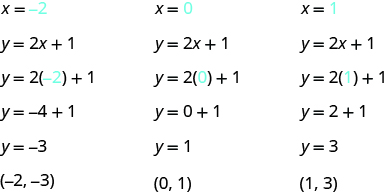
We can organize the solutions in a table. See [link] .
Now we plot the points on a rectangular coordinate system. Check that the points line up. If they did not line up, it would mean we made a mistake and should double-check all our work. See [link] .
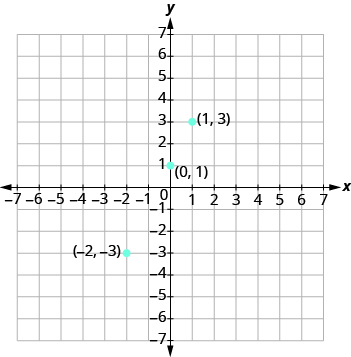
Draw the line through the three points. Extend the line to fill the grid and put arrows on both ends of the line. The line is the graph of
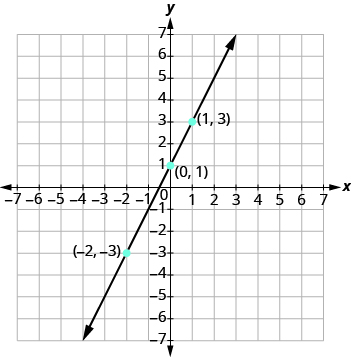
It is true that it only takes two points to determine a line, but it is a good habit to use three points. If you plot only two points and one of them is incorrect, you can still draw a line but it will not represent the solutions to the equation. It will be the wrong line. If you use three points, and one is incorrect, the points will not line up. This tells you something is wrong and you need to check your work. See [link] .
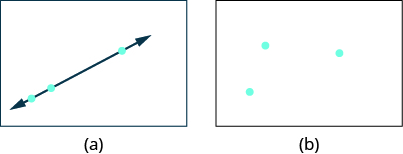
Graph the equation
Find three points that are solutions to the equation. It’s easier to choose values for and solve for Do you see why?
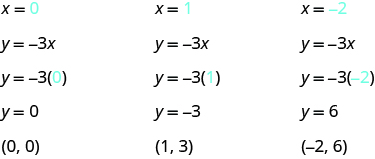
List the points in a table.
Plot the points, check that they line up, and draw the line as shown.
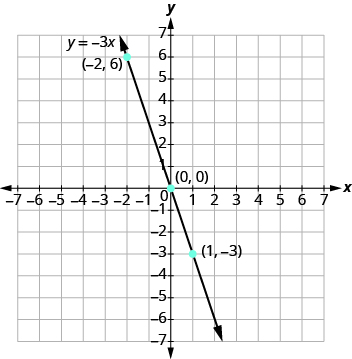
When an equation includes a fraction as the coefficient of we can substitute any numbers for But the math is easier if we make ‘good’ choices for the values of This way we will avoid fraction answers, which are hard to graph precisely.
Graph the equation
Find three points that are solutions to the equation. Since this equation has the fraction as a coefficient of we will choose values of carefully. We will use zero as one choice and multiples of for the other choices.
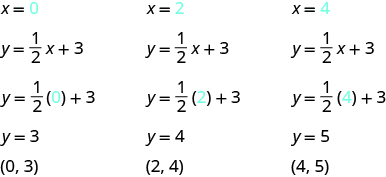
The points are shown in the table.
Plot the points, check that they line up, and draw the line as shown.
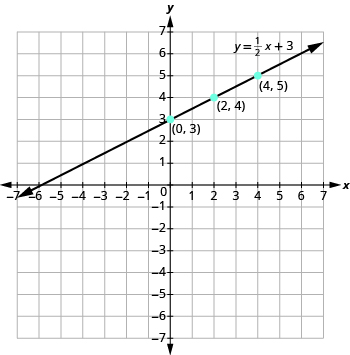
So far, all the equations we graphed had given in terms of Now we’ll graph an equation with and on the same side.
Graph the equation
Find three points that are solutions to the equation. Remember, you can start with any value of or
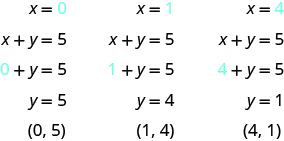
We list the points in a table.
Then plot the points, check that they line up, and draw the line.
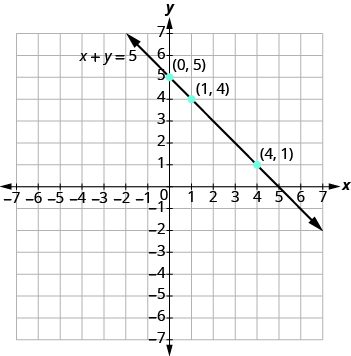

Notification Switch
Would you like to follow the 'Prealgebra' conversation and receive update notifications?